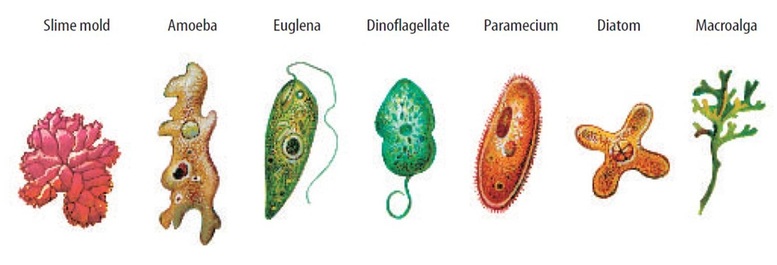As you can see in the image above protist vary greatly in structure and function. They are mostly unicellular but there are some multicellular protist like seaweed or kelp. They reside in any type of water you can imagine such as; rivers, oceans, snow, swamps, soil, swimming pools, and even in the atmosphere.
Do they move?
Of course! Some protists move using cellular extensions called speudopodia like ameobas. Some protists swim using cilia or flagella and others don't move on their own and rely on water currents or catching a ride on an aquatic creatures back.
Reproduction:
Protists reproduce via binary fission but the next generation of offspring can lack diversity in their genes while some protists conjugate.
Classifying Protists:
Animal-like: heterotrophs that capture and ingest their food
 |
| Amoeba |
 |
| Euglena |
Fungus-like: heterotrophs that feed on decaying organic matter
 |
| Slime mold |
Protists and Climate Change: When the temperature increases along with the increase of rainfall this can trigger microscopic algae which could turn out to be fatal toxins like the Harmful Algal Bloom that took place in the St. Lawrence river in 2008. Increased rain fall would increase the amount of nutrients that are running through our water from farms and factories, creating the perfect conditions for HABs. This may result in the collapse of the oceans food chains because the PH levels would lower juristically.

No comments:
Post a Comment